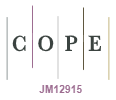Just Accepted
This article has been peer reviewed and accepted for publication. It is in production and has not been edited, so may differ from the final published form.
Development of an electronic medical record-based population health informatics tool to address obesity
Abstract
Objectives 1. To safely extract electronic medical record data to co-produce a population health informatics dashboard for obesity. 2. To explore how a population health informatics dashboard for obesity might be translated into routine public health practice. Methods This mixed methods study was conducted in Queensland, Australia with stakeholders (n=27) according to the Three Horizons Framework for Digital Health Transformation. Horizon 1 established the digital infrastructure necessary for accessing routine electronic medical record data from inpatient, outpatient, emergency and community encounters. Horizon 2 co-produced user requirements for a population health informatics dashboard and developed a proof-of-concept. Horizon 3 conducted usability testing to explore the theoretical feasibility of integrating the dashboard into practice. Results The Queensland Healthy Weight Dashboard is an interactive visualization platform for obesity surveillance capable of using near real-time electronic medical record data. We developed a proof-of-concept using a synthetic sample of 726,561 patients. Once commissioned, the dashboard will display aggregate, non-identifiable data from a total sample of patients with a measured body mass index of >1 million across 71 facilities in Queensland, including 19 health services and at least 71 individual facilities that use the ieMR. The dashboard can display near real-time (quarterly) data via descriptive analytics to (1) identify total raw counts and normalized values (2) longitudinally track and (3) geographically heatmap obesity, overweight, and healthy weight rates, and stratify by time (2016-2022), gender, age (2-99 years), and location (geographical area, facility). Usability testing with public health practitioner end-users (n=4) revealed above average overall usability but mixed task-based usability. Practitioners were optimistic about integrating the dashboard into routine practice. Conclusion We co-produced a population health informatics tool for obesity that can display hospital electronic medical record data in near real-time. With further validation and usability improvements, this tool can be translated into public health practice to guide obesity interventions.
PU24029 Accepted 30 June 2025
© CSIRO 2025


